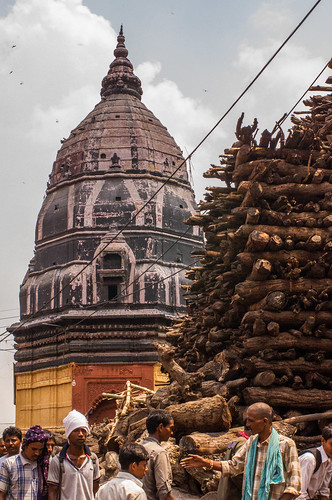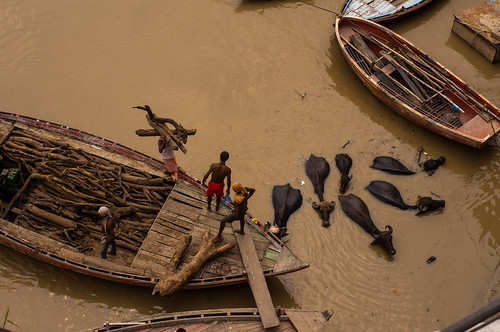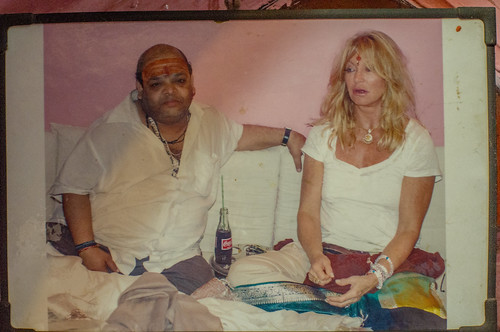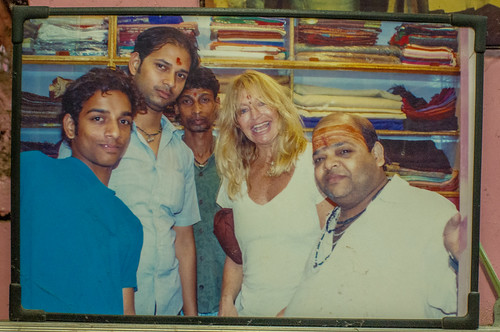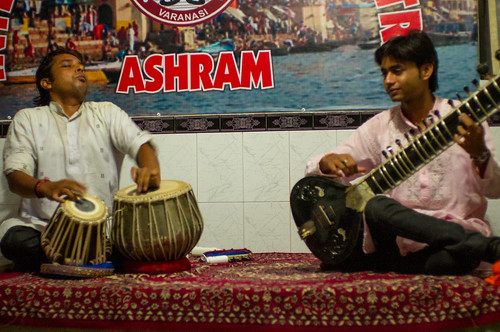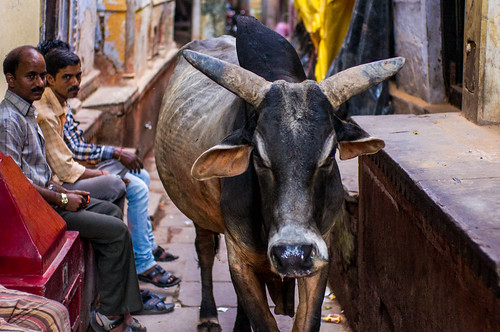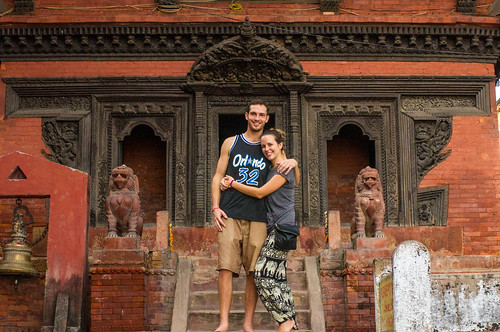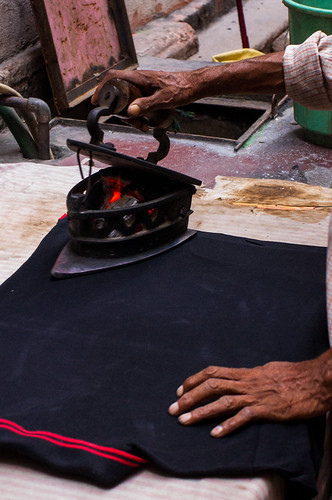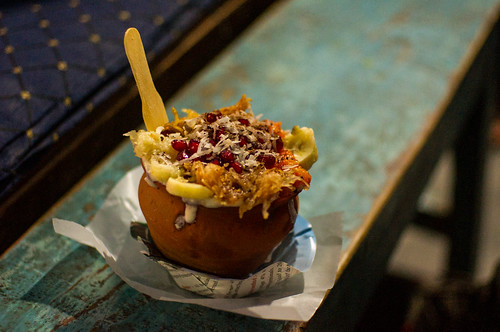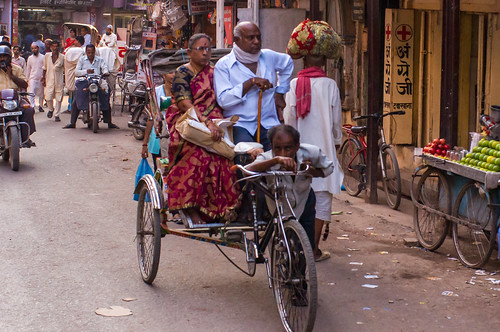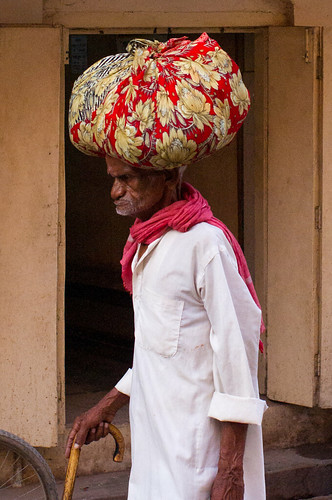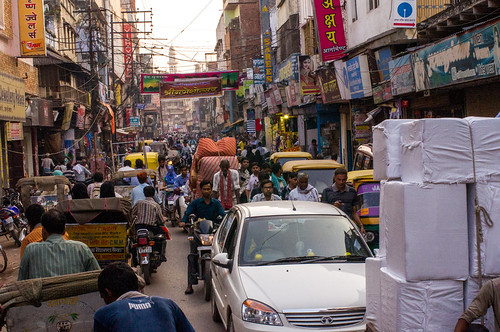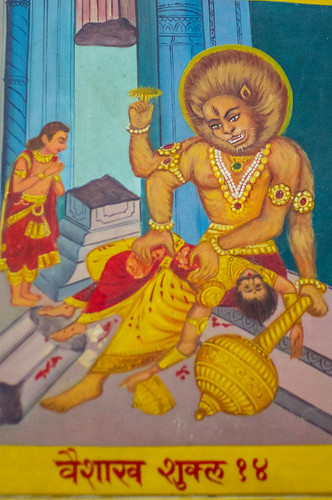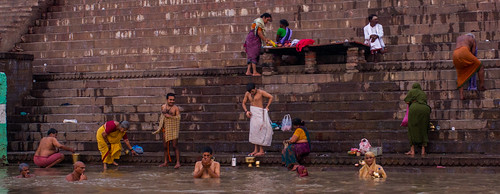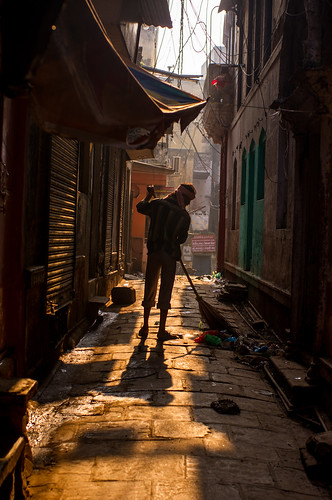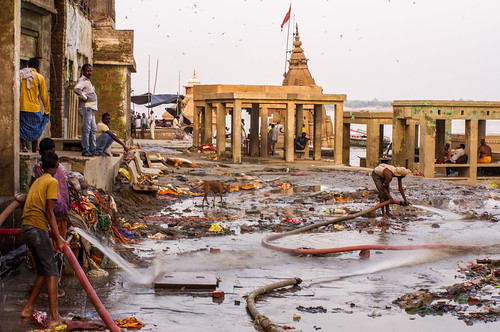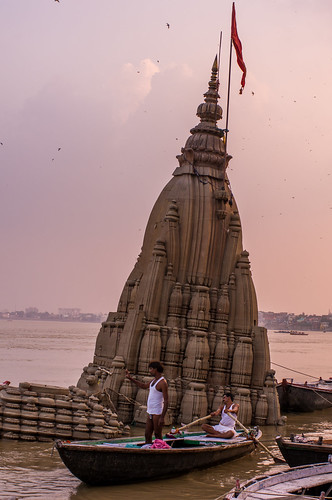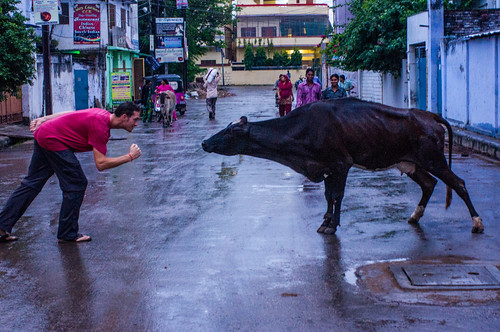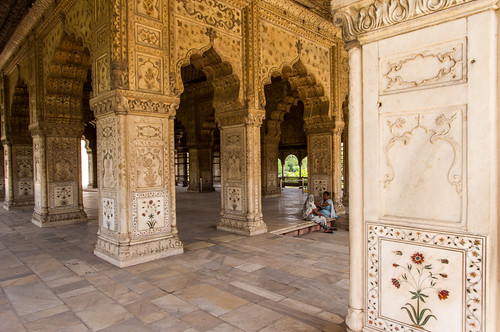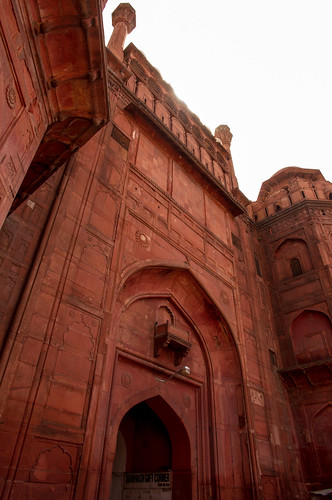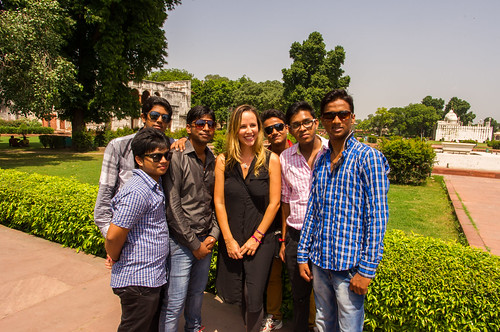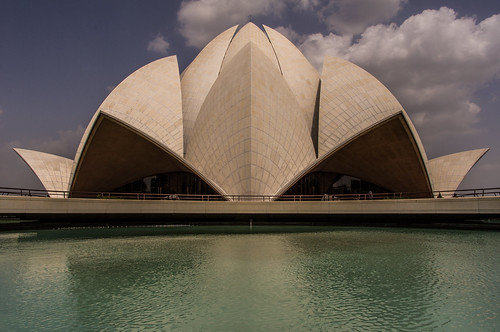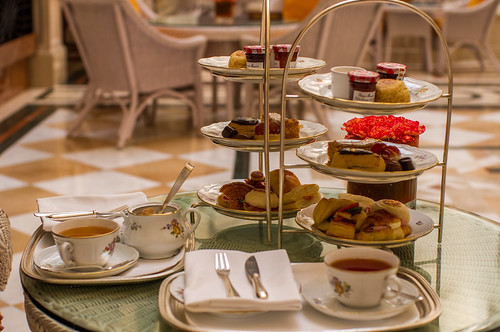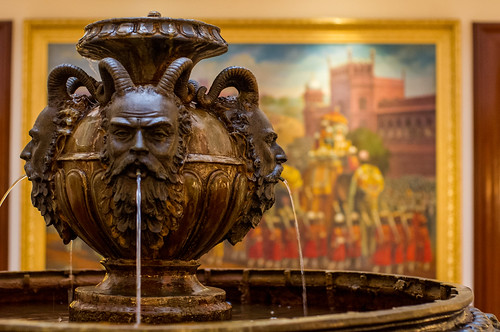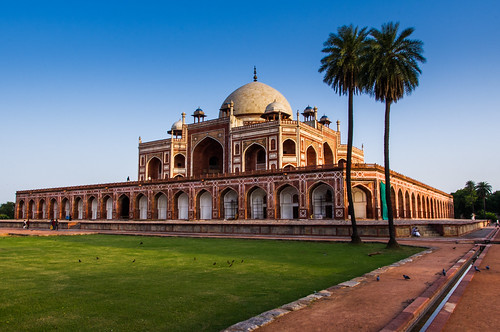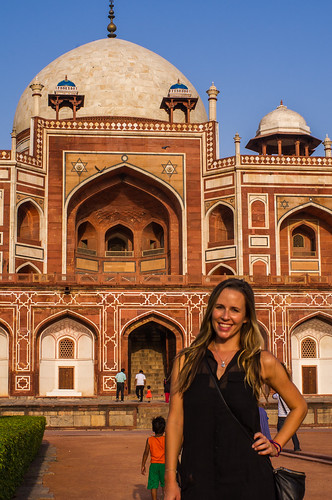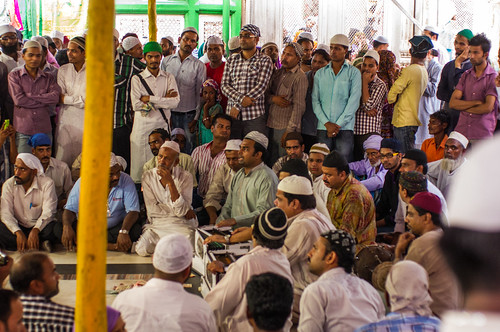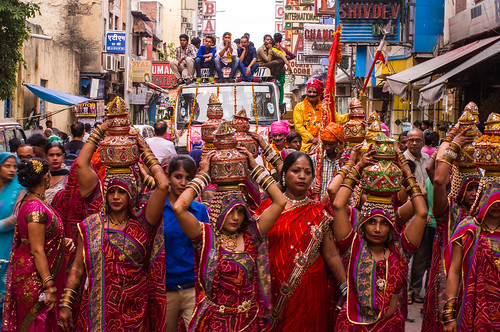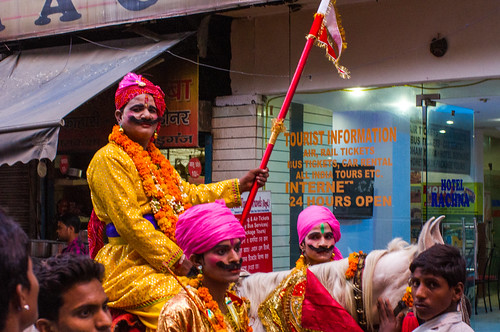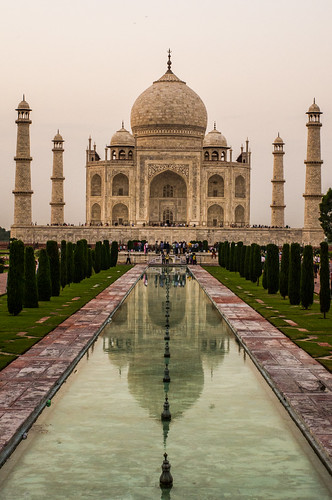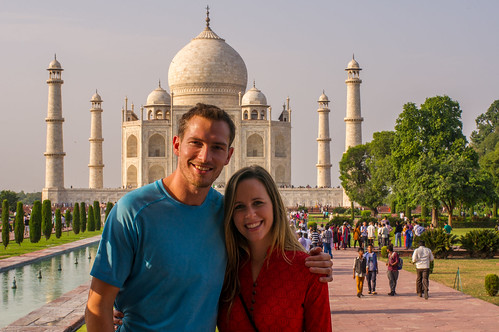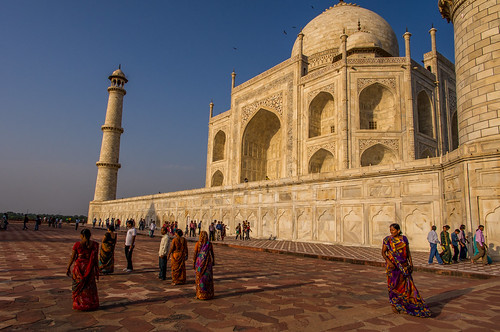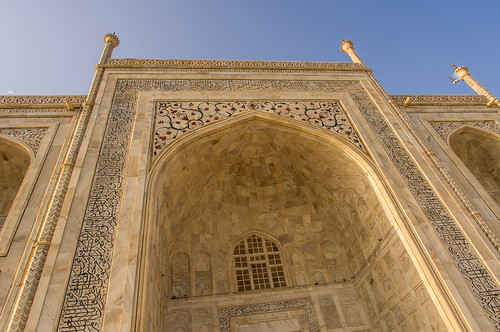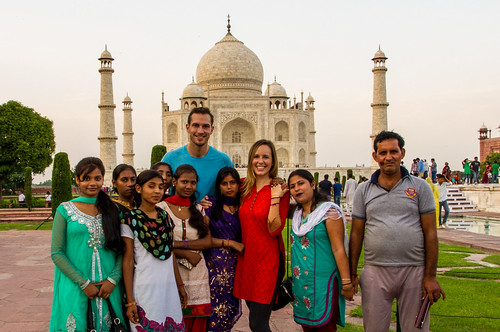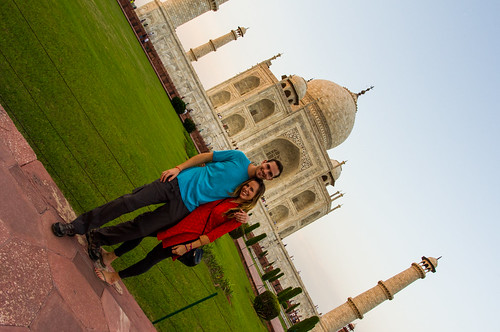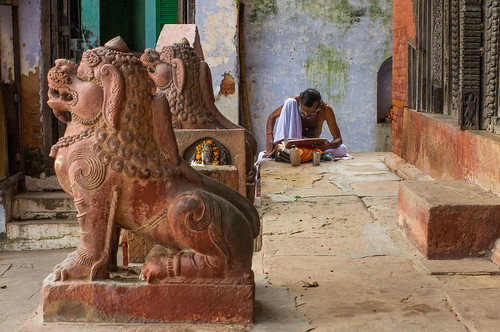 |
| One of many Brahmins in Varanasi |
From the Taj we traveled east to Varanasi, the holiest of India's seven sacred cities, which would place it high in the running for holiest worldwide. Varanasi (or Benares) is India's oldest city, and if you want to ascribe to it any more superlatives we'd probably say it's the dirtiest, most labyrinthine, and pretty much the most fascinating city we've visited. Hindus come from all over India to bathe in the sacred waters of the Ganges river, to get married, and to die. To get hitched in Varanasi makes the marriage blessed, while dying here enables one to skip a few levels of Samsara (the Hindu reincarnation cycle) and jump directly to enlightenment. As a result, during any short walk to a temple or while sipping chai in a roadside shop you're likely to see at least one wedding or funeral procession of excited Hindus running through the narrow streets.

Scenes of everyday life are as likely to be played out in India's streets as they are in its homes. This makes for some interesting sights and fun interactions with local kids, adults, and animals during any stroll through the city.
Cremation is an important part of the Hindu faith. Women aren't included in the ceremony as Hindus believe that they bring too much grief to the ceremony. The bodies are burned on large pyres at a riverside ghat where the fire is said to have been burning continuously for three thousand years, and the ashes are then thrown into the Ganges. Thousands of bodies are burned each day, which creates a mild but inescapable scent throughout the city.
Wood for cremations is relatively expensive, and Brahmins that explain the ritual ask tourists to donate. Unfortunately some dishonest locals will pressure tourists to pay and lie about the price of wood, which creates an awkward mix of somber reverence and petty hassling.
After a disorienting and sweaty walk through the narrow, maze-like streets, we took a breather in a rooftop restaurant. We wondered why it was enclosed by wire until this fierce beast showed up.
Kids flying kites
Varanasi's notoriously aggressive touts will lie through their teeth to try to get you to a bogus astrologer, their "brother's" pashmina shop or a shoddy yoga centre. At dinner one night we met a man who was eager to show us pashminas and silks at "Goldie Hawn's favorite shop" in Varanasi. The man knew a ton about her (including her cottage in Muskoka!) and insisted that she was one of his best friends, so we decided to check it out. Upon arrival, there were in fact photos of Goldie, but she was posing with a different man whom we'd never seen. When questioned, the man replied, "oh that's my twin brother."
Goldie did in fact visit the shop, but we're pretty sure they drugged her to get her there.
We visited a local ashram one night to see a tabla and sitar performance. Here's a video of the guys rocking out like its 1499.
Streetside silks
Cows are holy in India, so you often find them roaming the streets aimlessly. Usually not a problem (just watch out for the cow pies) but it can be a bit tricky in Varanasi where streets are sometimes less than a meter wide.
We missed out on the famous erotic temples in Khajuraho, but were able to see something similar at one of the Hindu temples we visited in Varanasi.
Our fashion sense has suffered quite a bit over the last few months of travel.
Hot coal ironing
Lassi is a common yogurt-based drink in India. We heard about the famous Blue Lassi Shop in the Old Town, and sure enough it served the best lassi in India. Here's the mixed fruit variety - incredibly delicious.
The cycle rickshaw drivers have a pretty brutal job. At times we felt guilty about getting a ride, but with so much poverty and unemployment in India, many are proud to provide a service where they earn their money honestly, regardless of how tough the task.
A hearty old Indian man
A glimpse of the insanity of the roads in Varanasi
Our friend Sunny. We met him through an Austrian couple who he knew, and he helped us navigate the sights of Varanasi. He was an incredibly honest and generous man who refused payment for his time. On the last day we were to walk around with him his father passed away and we didn't see him again, but we are still in touch.
Indian street kids
A Hindu God depiction at the Rama temple. Ashley often found the God faces looked like a Kindergarten arts and crafts project.
This is Narasimha, an avatar of Vishnu with a blowout that would make Pauly D jealous. Quit stalkin' my life bro.
The Ganges is considered holy water, and many people come to cleanse and bathe themselves in the morning. They must be cleansing their souls, because the water is filthy. We heard a rumor of a foreign tourist who decided to join the locals in the water and wound up in the hospital.
This early morning street sweeper is undoubtedly a member of the lowest (untouchable) caste. Even though the caste system is officially obsolete in India, its centuries-old traditions are still going strong, especially in rural villages. The system dictates every part of a Hindu's life, including what jobs he can hold, whom he can marry, and often where he can live and spend time. Lower castes are appreciated for providing services that are essential to society, but you still wouldn't find a member of the upper castes doing certain jobs like cleaning the street or making leather.
We met a mother and daughter who were traveling through India as well and joined them for a day of sights with their guide, Cristo (a Brahmin - the highest caste).
Unfortunately our visit to Varanasi was timed too soon after the monsoon season and as a result many of the ghats were flooded. The clean-up process was just getting started.
Many of the temples were still partially submerged.
Cow jousting
You can find the rest of our photos from Varanasi in the Flickr album.
